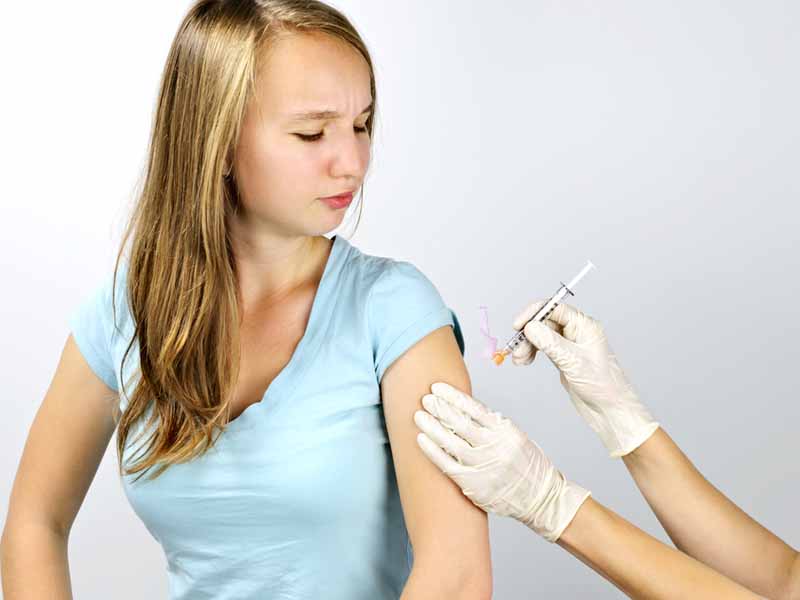CDC: 2017 HPV Vaccination Rate Up 5.2 Points Over 2016
August 29, 2018, 03:16 pm News Staff – (Editor’s note: This story has been updated to correct the HPV vaccination rate increase.) It's back-to-school season, so here's a fractions problem.
Let's say a vaccine could prevent 79 percent of cancers that share a common root. Now let's say that less than 50 percent of the eligible population was up to date on the vaccine, and that 79 percent of the guardians of the eligible population did not think the vaccine should be mandatory.
How many unvaccinated persons will end up with cancer they might have avoided?
The answer is too many, but the CDC reported encouraging progress toward reducing that number in a Morbidity and Mortality Weekly Report (MMWR) issued Aug. 24: 48.6 percent of adolescents were up to date on HPV vaccination in 2017, an increase of 5.2 percentage points over the previous year.

In good news for rural states, the report notes that the largest average annual increase was in Virginia (8.5 percentage points), with Montana up 7.4 percentage points and Arkansas; Iowa; Utah; and El Paso County, Texas, each up 7.3 percentage points.
The Academy earlier this year reiterated the need for rural physicians to receive robust support in the administration of the HPV vaccine.
"We believe more HPV education and an increase in knowledge base regarding the vaccine and HPV-related cancers is necessary for physicians and health care professionals and should be offered in addition to the communication skills to recommend the vaccine," the AAFP wrote to HHS in June.
The Academy sent that letter on the eve of the National Vaccine Advisory Committee (NVAC)'s quarterly meeting at which new HPV vaccination recommendations were approved. Several of these recommendations would affect family physicians, including calls for HHS to encourage
- development and implementation of evidence-based resources, and support for collaborative relationships;
- better education for beneficiaries from payers, employers and quality-improvement organizations about coverage and the importance of receiving the full HPV vaccination series;
- further research on the needs of rural practices and barriers their patients face; and
- increased use of telemedicine systems to strengthen education.
NVAC said low rates of HPV vaccination is often attributed to five main causes:
- differing perspectives on the risks and benefits of cancer preventive services,
- the fact that many adolescents do not regularly seek primary care,
- lack of a strong recommendation from primary care professionals,
- the fact that HPV vaccination is mandated for school enrollment in just three states, and
- the significant number of parents who refuse to allow their children to receive HPV vaccination.
In fact, a 2016 report published in Cancer Epidemiology, Biomarkers & Prevention said only 21 percent of parents who answered a national survey "agreed that laws requiring HPV vaccination for school attendance are a good idea."
That figure underscores a key vaccination paradox: Support for school-mandated HPV vaccination almost tripled among parents in that survey when they were given the chance to exempt their own children, but such opt-out provisions undermine efforts to limit illness.
A study published this month in Pediatrics addresses the concern among some that HPV vaccination may encourage risky adolescent sexual behaviors.
"Enacting legislation regarding HPV was not associated with changes in recent sexual intercourse or condom use during last sexual intercourse in United States adolescents," the authors wrote.
More From AAFP
American Family Physician: AFP by Topic: Immunizations